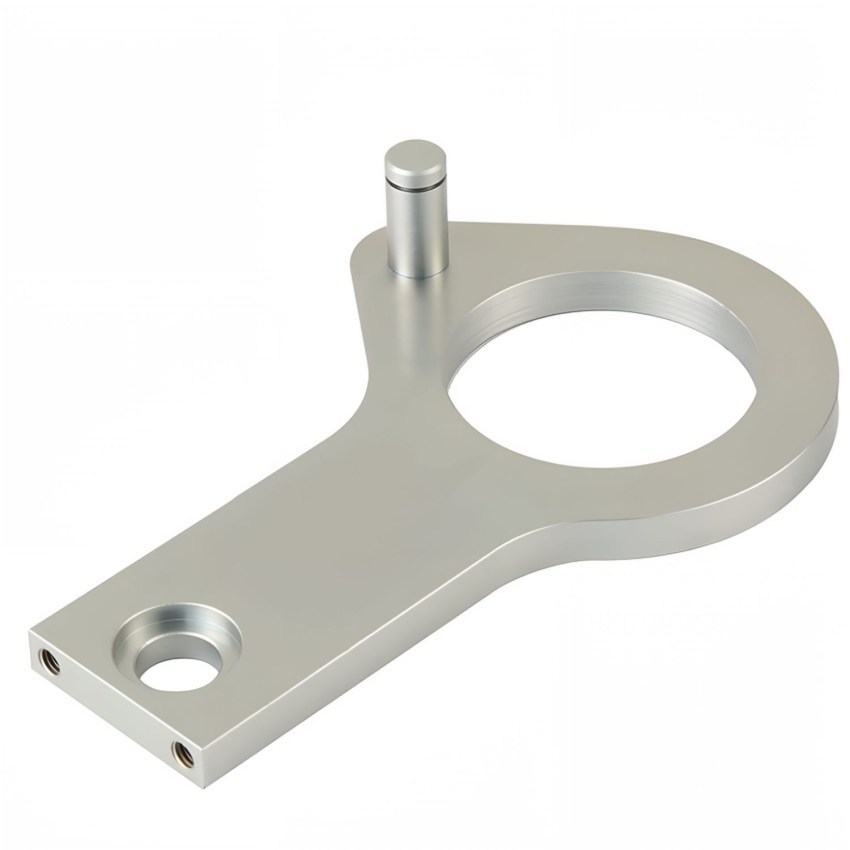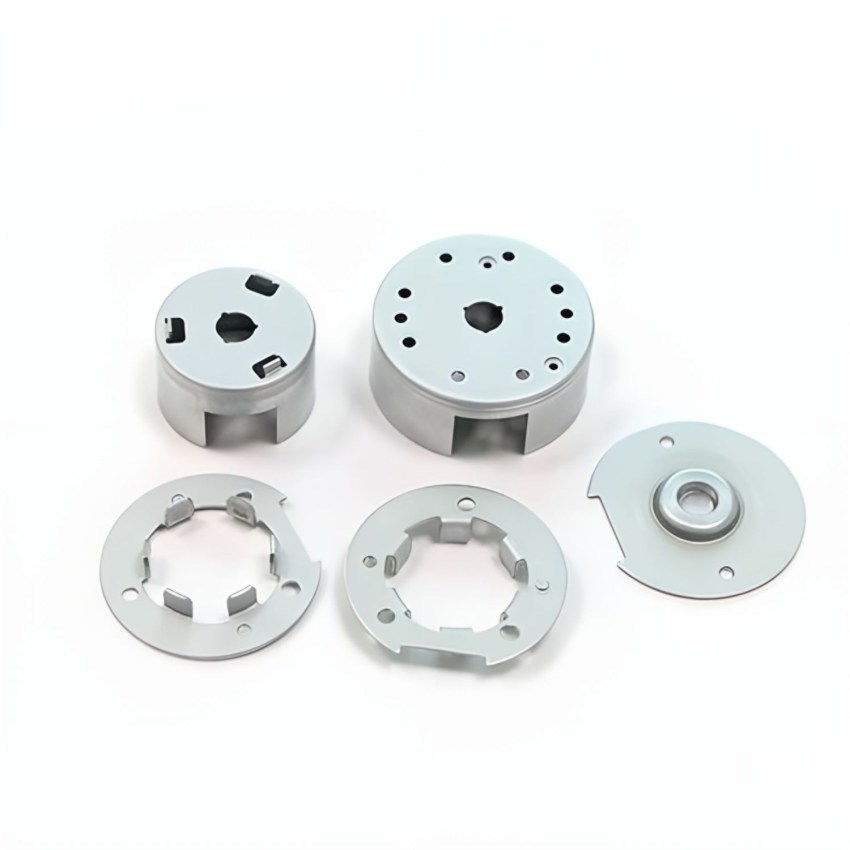What to Look For When Selecting a Punching Machine for Sheet Metal: A Comprehensive Guide
Release time:
2025-02-07
What to Look For When Selecting a Punching Machine for Sheet Metal The selection of a punching machine for sheet metal is a critical decision that can impact your manufacturing efficiency, product quality, and overall operational costs. With the wide array of options available on the market, understanding the key factors in selecting the appropriate punching machine becomes paramount. This guide w

What to Look For When Selecting a Punching Machine for Sheet Metal
The selection of a punching machine for sheet metal is a critical decision that can impact your manufacturing efficiency, product quality, and overall operational costs. With the wide array of options available on the market, understanding the key factors in selecting the appropriate punching machine becomes paramount. This guide will delve into the various aspects of punching machines, providing you with detailed insights to make an informed choice.
Understanding Punching Machines: An Overview
Punching machines are essential tools in the sheet metal processing industry. They are primarily used to create holes in metal sheets, facilitating further operations such as bending, shaping, and assembly. The technology behind punching machines has evolved significantly, with modern machines offering enhanced automation, precision, and versatility.
Types of Punching Machines
To make an informed selection, it's crucial to understand the different types of punching machines available in the market. There are three main types:
1. Mechanical Punching Machines
Mechanical punching machines utilize a motor-driven mechanism that creates powerful punches. They are ideal for high-speed operations and are commonly used in mass production environments. These machines offer significant advantages in speed and efficiency but may require more maintenance compared to other types.
2. Hydraulic Punching Machines
Hydraulic punching machines operate using hydraulic fluid pressure to generate force. They provide a smooth and controlled operation, making them suitable for thicker materials and complex shapes. Hydraulics allow for greater flexibility in terms of the punching force applied, which can be beneficial for intricate designs.
3. CNC Punching Machines
Computer Numerical Control (CNC) punching machines offer the highest level of automation and precision. They are programmed to perform a series of punching operations with minimal human intervention. CNC machines are perfect for complex designs and high production runs, ensuring consistent quality and reducing lead times.
Key Features to Consider When Selecting a Punching Machine
When choosing a punching machine, several critical features must be evaluated to align with your specific operational needs. Below are the key considerations:
1. Material Thickness and Type
The type and thickness of the material you intend to punch will significantly influence your choice of machine. Different machines are designed to handle varying thicknesses and material types, such as aluminum, steel, or stainless steel. Assess your material requirements to ensure compatibility with the punching machine.
2. Punching Speed and Efficiency
Selecting a machine with optimal punching speed can enhance your production efficiency. Speed is critical, especially in high-volume production environments. Evaluate the machine’s specifications for strokes per minute (SPM) and overall cycle time to determine its efficiency.
3. Punching Force and Power Consumption
The punching force is a vital factor, especially when dealing with thicker materials. Ensure that the machine can generate sufficient force to deliver clean cuts without damaging the material. Additionally, consider the machine’s power consumption to manage operational costs effectively.
4. Automation and Control Features
Modern punching machines come equipped with various automation and control features, including programmable settings and advanced software interfaces. Look for machines that offer user-friendly controls, allowing for easy programming and operation. This can significantly reduce setup time and improve productivity.
5. Tooling Compatibility and Availability
Verify the machine's tooling compatibility with your production requirements. The availability of replacement and additional tools is also crucial for minimizing downtime. Ensure that the manufacturer provides a variety of tooling options to cater to different punching needs.
6. Space and Footprint Considerations
Before finalizing a machine, assess your workshop's available space. Punching machines come in various sizes, and choosing a machine that fits comfortably while allowing for proper workflow is essential. Consider the machine's footprint and any additional space required for operation and maintenance.
Evaluating Manufacturer Reputation and Support
The reputation of the manufacturer plays a significant role in your machine selection process. Opt for manufacturers known for producing high-quality punching machines and providing exceptional customer support. Investigating reviews and testimonials from other customers can offer valuable insights into their experiences.
1. Warranty and Service Options
A solid warranty and comprehensive service options are indicators of a reliable manufacturer. Ensure that the machine comes with a warranty that covers parts and service for a reasonable duration. Additionally, verify the availability of trained technicians for onsite support and maintenance.
2. Training and Resources
Some manufacturers offer training programs and resources to help operators maximize the machine's capabilities. Consider partnering with a manufacturer that provides education and ongoing support to ensure your team is well-equipped to operate the machine effectively.
Cost Analysis: Budgeting for Your Punching Machine
Cost is an inevitable consideration when selecting a punching machine. It’s essential to strike a balance between quality and affordability. Conduct a thorough cost analysis, taking into account the initial purchase price, operational costs, and potential return on investment (ROI) through increased productivity and efficiency.
1. Initial Purchase Price
The initial cost of purchasing a punching machine can vary significantly based on the type, features, and manufacturer. Be prepared to invest in a machine that meets your quality and performance standards, as cheaper options may lead to higher maintenance costs and lower efficiency in the long run.
2. Operational Costs
Evaluate the ongoing operational costs, such as energy consumption, tooling expenses, and maintenance needs. Opt for machines that offer energy-efficient operations to keep long-term costs manageable. Additionally, factor in the cost of employee training if the machine requires specialized knowledge.
Conclusion: Making an Informed Decision
Selecting the right punching machine for sheet metal operations is a multifaceted process that requires careful consideration of numerous factors. From understanding the various types of machines to evaluating specific features and manufacturer support, being thorough in your assessment will lead to better operational outcomes. By following the guidelines outlined in this comprehensive guide, you will be better equipped to make an informed decision that aligns with your production needs and enhances your overall efficiency.
FAQs
1. What is the difference between mechanical and hydraulic punching machines?
Mechanical punching machines rely on a motor-driven mechanism for fast operations, whereas hydraulic machines use fluid pressure to provide a controlled punching force, making them suitable for thicker materials.
2. How much does a punching machine typically cost?
The cost of a punching machine can vary widely, ranging from a few thousand to several tens of thousands of dollars, depending on the type, brand, and features of the machine.
3. How do I maintain my punching machine?
Regular maintenance includes cleaning, lubrication of moving parts, inspecting tooling, and checking for any signs of wear. Refer to the manufacturer’s guidelines for specific maintenance procedures.
4. Can I use a punching machine for materials other than metal?
While punching machines are primarily designed for metal, certain models may also handle softer materials such as plastics or composites. Always check the manufacturer's specifications for compatibility.
5. What is the importance of tooling in punching operations?
Tooling is critical as it determines the shape and size of the punched holes. The right tooling will ensure clean cuts, reduce material waste, and enhance the overall quality of the finished product.
Key words:




